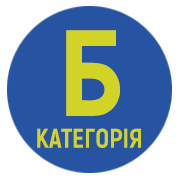USE OF FREE SOFTWARE WHEN STUDENTS STUDY ASOU (CAD)
DOI:
https://doi.org/10.32782/cusu-pmtp-2024-1-10Keywords:
automated management systems, design systems, student training.Abstract
The article is devoted to the problem of studying various automated control systems by students, which, today, are widely used for research, control of technological processes, analysis of various complex systems, as well as practical development of technical objects. On the basis of the analysis of scientific, methodical sources, Internet resources, it was established that in view of the global processes of digitalization and automation of production processes, the modern training of specialists requires new knowledge about automated systems that involve the use of digital technologies, the formation of students’ practical skills when working with various software provision, development of their critical and innovative thinking. One of the types of automated control systems are automated design systems (CAD), equipped with a wide range of different programs that make it possible to design technical objects, create 2D and 3D models, apply different approaches to creating model geometry (solid modeling, modeling using splines, modeling using surfaces, etc.). The experience of working with students shows that for the educational process, for the formation of primary skills, it is advisable to use free software, in particular, the Blender software package, which is a powerful tool for three-dimensional graphics and can be successfully used to teach students, to perform various modeling tasks. Therefore, the article pays attention to the analysis of the Blender program, substantiates the expediency of its use in the educational process, considers the main advantages and disadvantages of this software package, and also provides a specific example of students’ performance of practical tasks using the Blender toolkit. So, Blender can be used to teach students the basics of three-dimensional graphics, to develop creative projects, which undoubtedly contributes to the formation of their digital competence and creative potential.
References
АСУ ВНЗ. URL: https://vuz.osvita.net/ (дата звернення 02.02.2024).
Береза А. М. Основи створення інформаційних систем : навчальний посібник. Київ : КНЕУ, 2001. 214 с.
Глушков В. М. Введення в АСУ. Київ : Техніка, 1972. 254 с.
Кривонос О. М. Використання Blender в навчальному процесі. Матеріали XVI міжнародної науково-практичної конференції «Інформаційні технології і автоматизація – 2023» URL: http://surl.li/rfhwc (дата звернення 23.02.2024).
Лук’янова Д. Ю., Стьопкін А. В., Турка Т. В. Використання вільнопоширюваного кросплатформного редактору 3D-графіки Blender в навчальному процесі. Технології електронного навчання. Том 1. 2016. URL: http://ddpu.edu.ua/texel/ (дата звернення 05.02.2024).
Мосіюк О. О. Редактори тривимірної графіки : навчально-методичний посібник. Житомир : Вид-во ЖДУ ім. Івана Франка, 2022. 52 с.
Основи інформаційних систем: навчальний посібник. Вид. 2-ге, перероб. і доп. / В. Ф. Ситник, Т. А. Писаревська, Н. В. Єрьоміна, О. С. Краєва. Київ : КНЕУ, 2001. 420 с.
Чінчой В. В., Рябець С. І. Методика реалізації технологій 3D-друку в проектній діяльності учнів. Наукові записки. Серія: Проблеми фізико-математичної і технологічної освіти. Кропивницький : РВВ ЦДПУ ім. В. Винниченка, 2020. Вип. 14. С. 167–176.
Яганов П. О. Дослідження систем масового обслуговування : текст лекцій. Київ : НТУУ «КПІ», 2006. 40 с.








